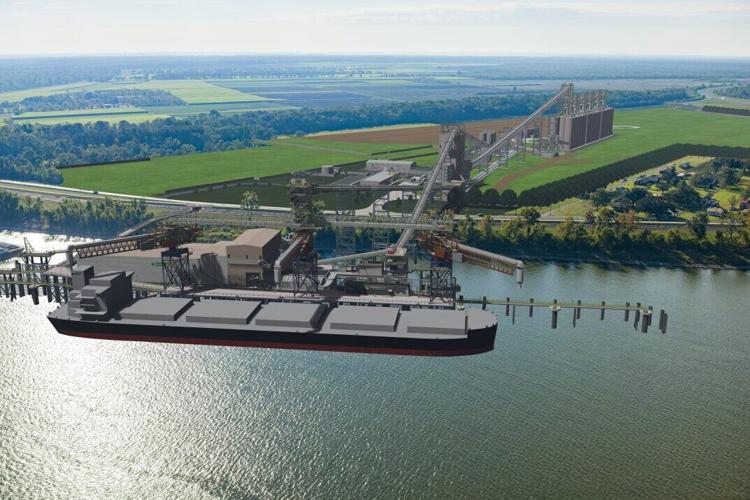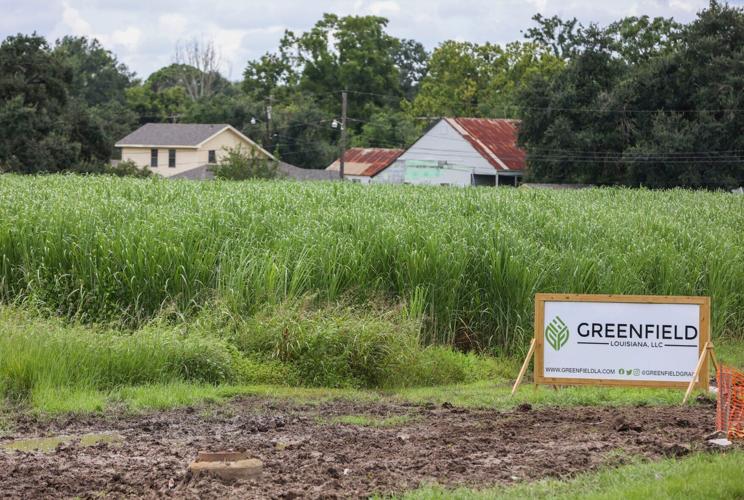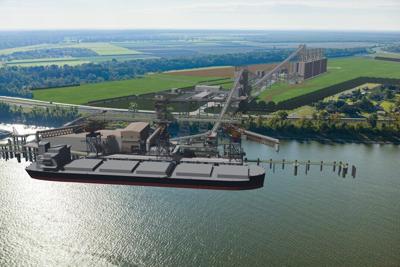Opponents of a plan to build a controversial $225 million grain export terminal on the west bank of St. John the Baptist Parish have returned to court to try to overturn a decision rezoning the project site for industrial use.
The proposed project has taken on increased significance due to environmental justice concerns for the wider industrialized area along the Mississippi River between Baton Rouge and New Orleans.
The Descendants Project and its two co-founders, sisters Jo and Joy Banner, filed an update to their longstanding lawsuit in parish court challenging St. John's efforts to allow Greenfield Louisiana LLC to build the terminal on property adjacent to the Wallace community with a buffer of only 300 feet.
Their lawsuit contends the smaller buffer allowed for Greenfield is improperly based on Census Bureau maps, and violates both the parish's own zoning ordinance and state law. It warns the change could open the gates for other major industrial facilities to be located only 300 feet from homes in LaPlace, Edgard, Reserve and Pleasure Bend.
Greenfield has disputed the activists' characterization of the zoning change approved by the parish council and says its project will bring economic development to the community.
The suit also charges that because Parish President Jaclyn Hotard co-authored the zoning change ordinance, she has violated state ethics rules because her mother-in-law has a financial interest in land along the Greenfield tract that the company may need to use for the facility.
The lawsuit names the parish, Hotard, the Parish Council and Greenfield as defendants. Hotard did not respond to requests for comment.
The change approved by the rezoned about 1,300 acres of land between the Wallace community and the Whitney Plantation museum from residential to industrial use. Most of the property was rezoned to the parish's I-3 heavy industrial category, which the zoning ordinance says requires a 2,000-foot buffer, but a 300-foot buffer adjacent to Wallace homes was rezoned to I-1 light industrial.
The project will include 56 grain elevators and a conveyor structure to move the grain to ships on the Mississippi River for export overseas. The company says that once complete, the facility will employ 100 workers.

Houses can be seen adjacent to property where Greenfield Louisiana LLC wants to build an export grain facility in Wallace, La., on Thursday, Aug. 11, 2022. On Monday, Aug. 21, 2023, a state judge block (Photo by Sophia Germer, NOLA.com, The Times-Picayune | The New Orleans Advocate)
Greenfield officials have said its structures will be at least 500 feet from the nearest home, and that a 10-foot-high fence and a tree line will also be part of the buffer. But the lawsuit says that buffer still violates the zoning ordinance's rules for I-1 industrial zones, which require at least a 600-foot buffer. And portions of the proposed plant would still violate the I-3 heavy industrial zone's 2,000-foot buffer requirement, it says.
Greenfield issued a statement that did not directly address the lawsuit's allegations.
"Greenfield Exports is actively engaging with local residents, businesses, and regulatory bodies to ensure responsible development that will respect and coexist with the area's significant historical and cultural integrity," said Lynda Van Davis, counsel and head of external affairs for the company. "St. John the Baptist Parish government officials have acted transparently and inclusively, and Greenfield will continue to follow local ordinances as it helps revitalize the local community."
Descendants members say they are opposed to the terminal because of the potential for grain dust emissions, the threat of grain dust explosions, and because the huge complex would threaten neighboring historic areas, including those dedicated to commemorating the legacy of slaves who worked the River Parishes' plantations.
“The St. John the Baptist Parish Council brazenly violated local ordinances and Louisiana’s state constitution when it sided with industry to rezone this land to build what would be one of the world’s largest grain terminals on the doorsteps of our homes,” the Banner sisters said in a statement.
That lawsuit also charges that in approving the zoning change, the council ignored a finding by the Army Corps of Engineers that the community of Wallace, a National Register Historic District; Whitney Plantation; Evergreen Plantation; Oak Alley Plantation; and the historically Black Willow Grove Cemetery will all be harmed by the project.
Corps permits are required because of the project's location along the river, potential conflicts with the river's levee system, and possible impacts on wetlands.
"We are still evaluating the permit application, including the engineering and environmental assessments, as well as evaluating the effects on historic properties as required by Section 106 of the National Historic Preservation Act," said Corps spokesperson Ricky Boyett. "We do not have a decision timeline at this point."
The community of Wallace has about 800 residents, 89% of whom are Black, according to the suit, and was settled by descendants of Louisianans enslaved on plantations along the river.



